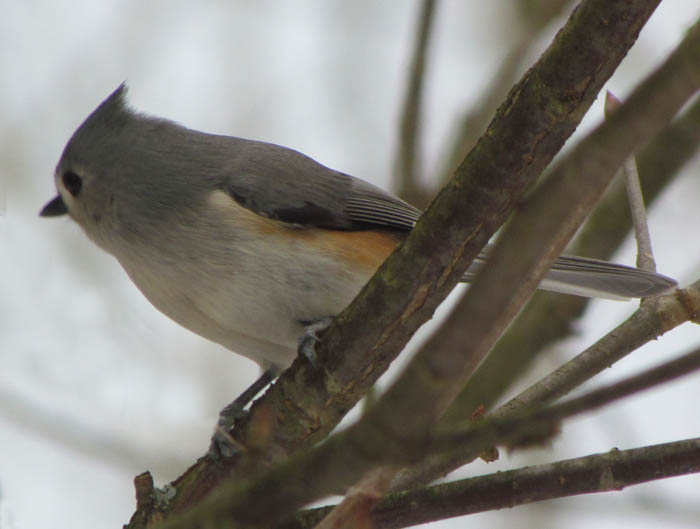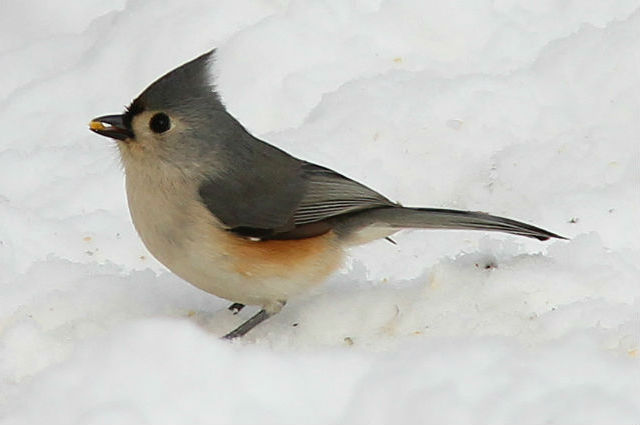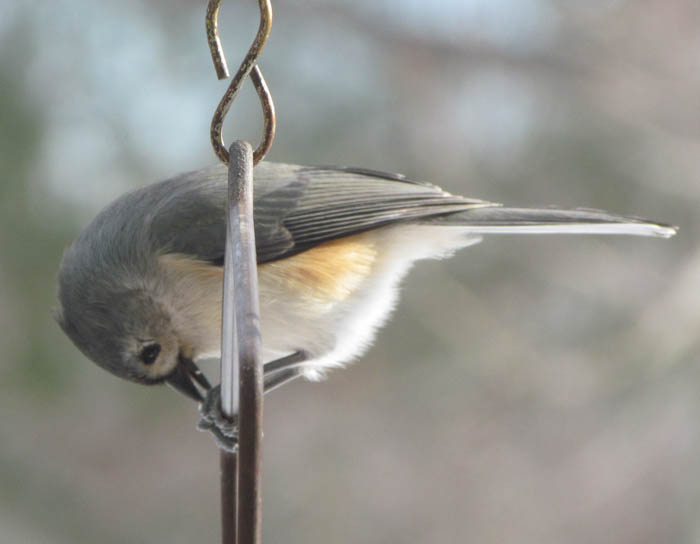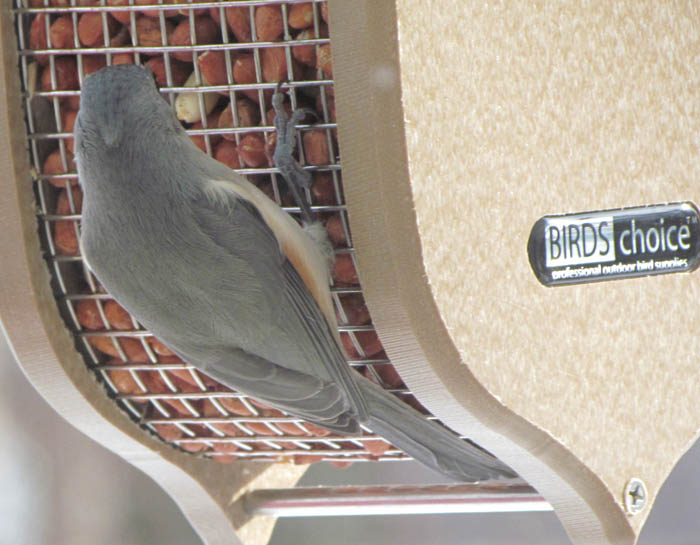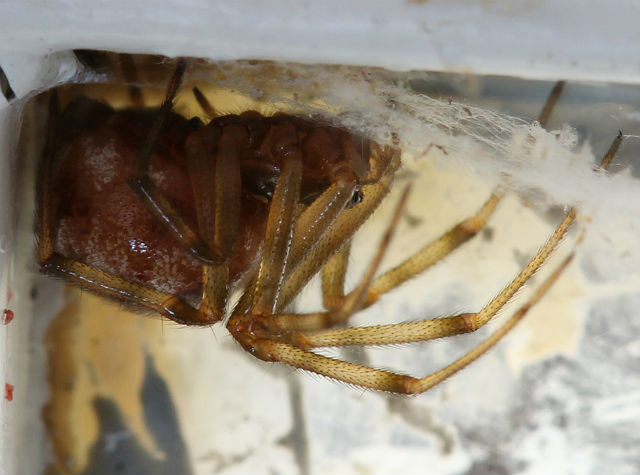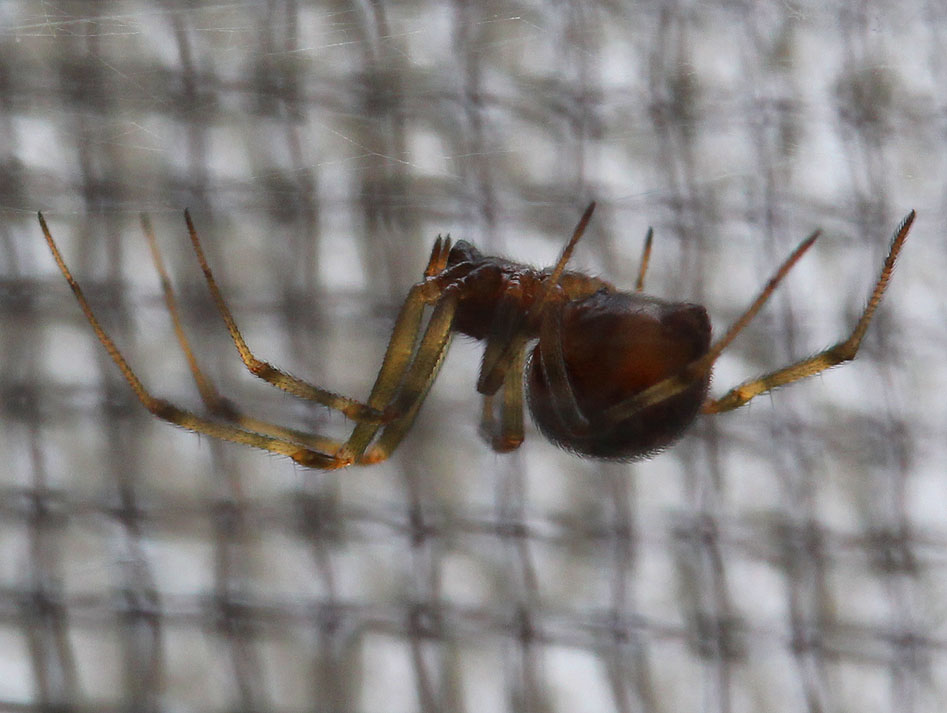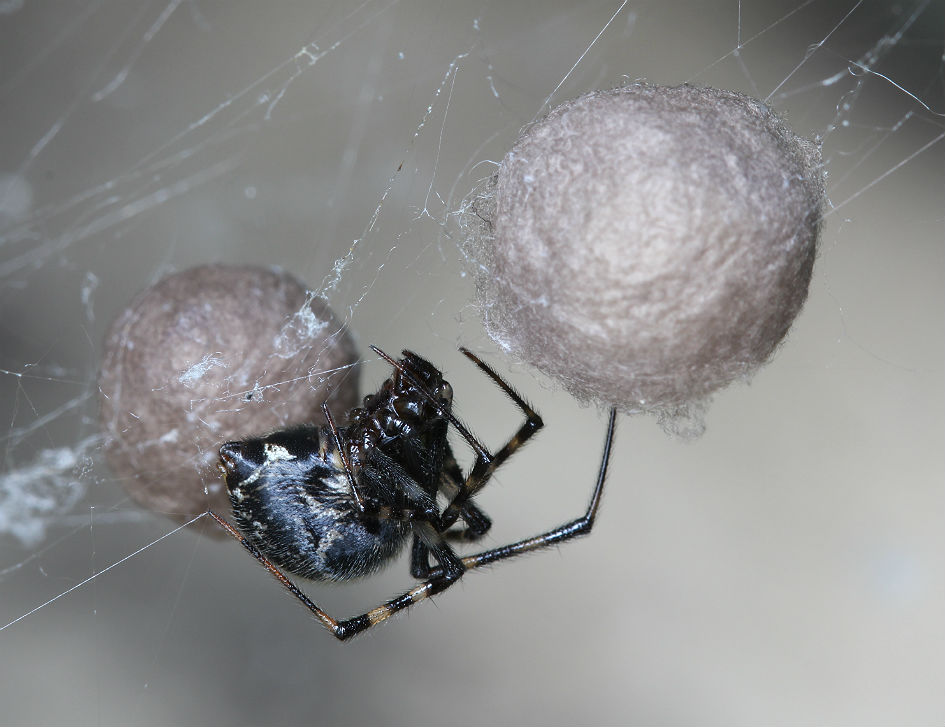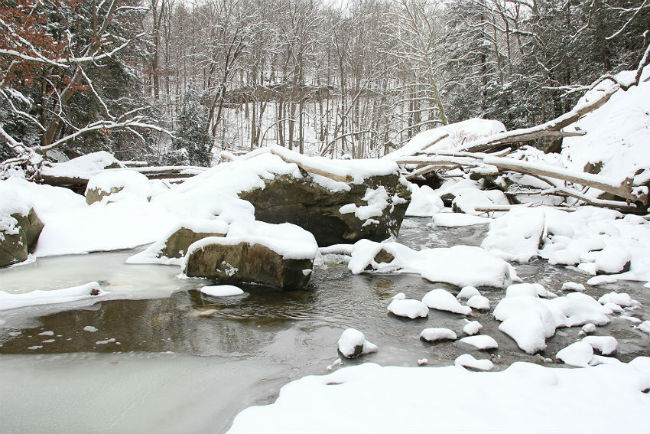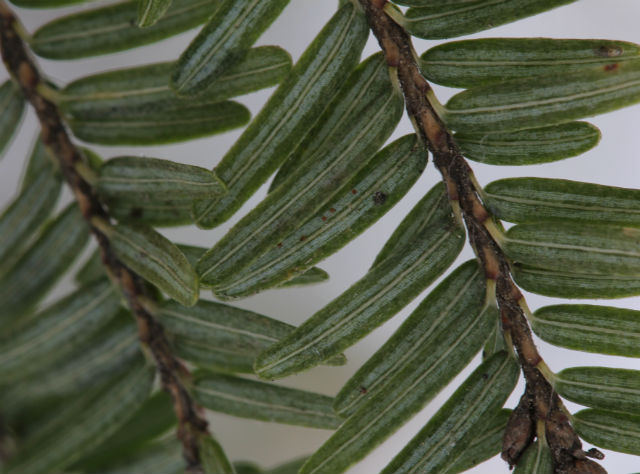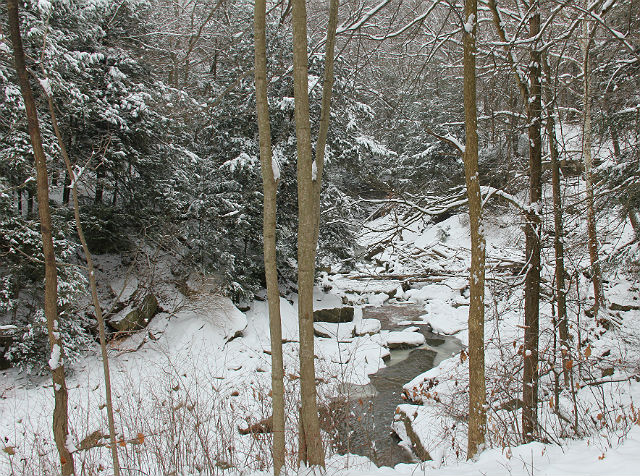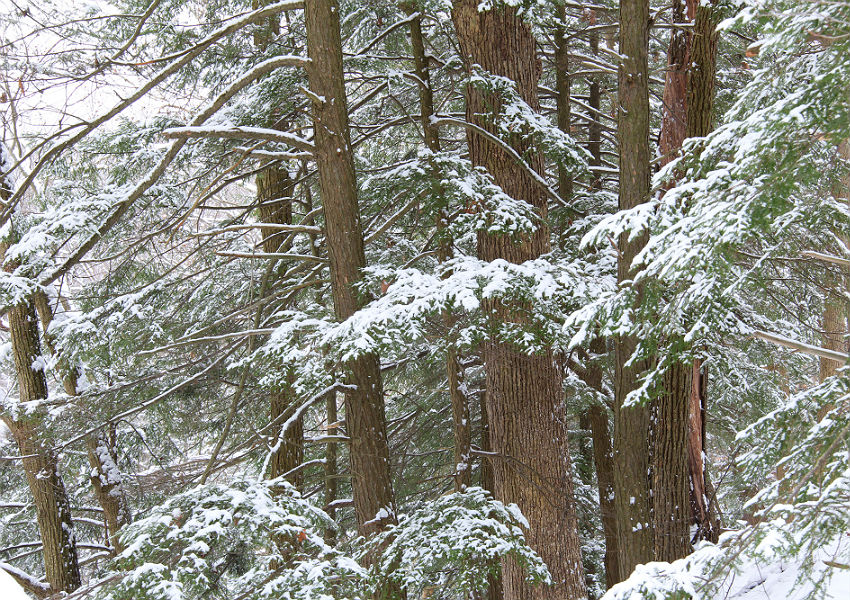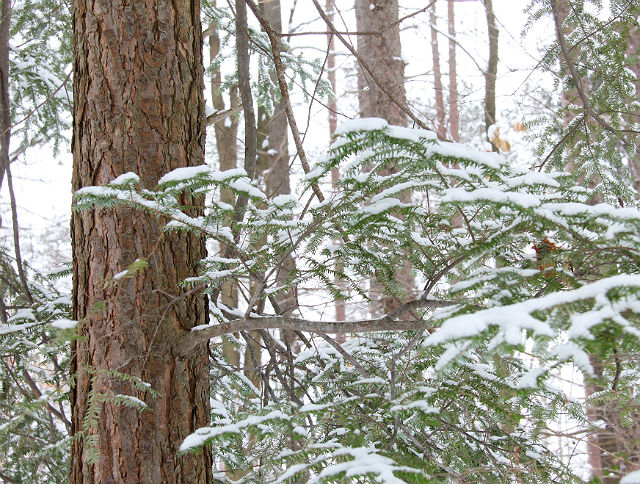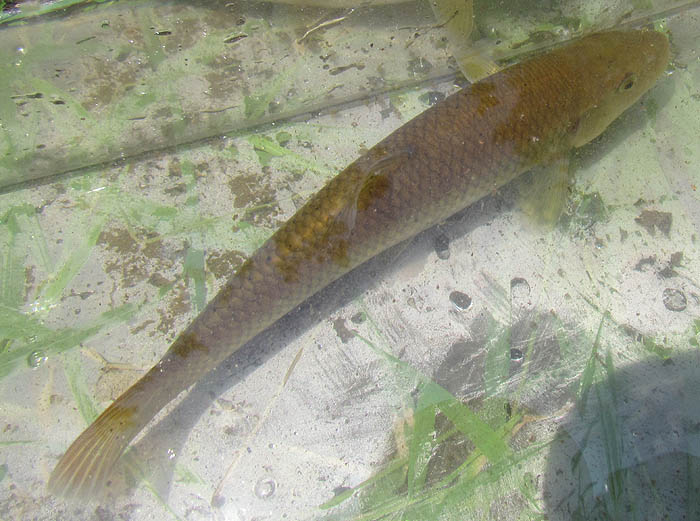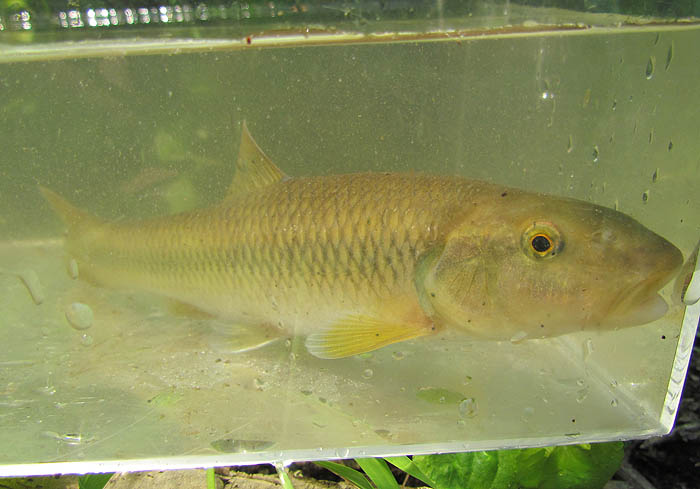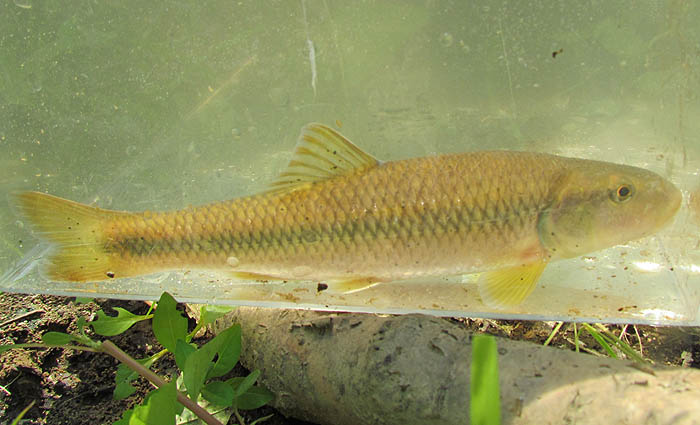With its pointy crest, large eyes and seemingly friendly disposition, the Tufted Titmouse has a special kind of appeal. It has a busy demeanor, flitting about actively foraging for food. This bird often hangs out with its similar-sized relative, the Black-capped Chickadee.
This bird is familiar to anyone who feeds birds as it is a frequent visitor to homes. Its peter, peter, peter call can often be heard when on woodland hikes. The Tufted Titmouse relishes sunflower seeds and will hold a seed with its feet and use its beak to hammer away at the seed until the shell falls off. These birds create caches of food, hiding seeds away under the bark of trees to retrieve later.
In warmer months they feed on insects, snails and spiders. In the Winter they seek out acorns, sumac, beechnuts and cherries.
This is one of about the two dozen species of Ohio birds that need dead or dying trees to construct a nesting cavity. Relatively recent woodland management methods have started to understand the value of standing dead timber.
The Tufted Titmouse likes to line its nest with fur and has been observed plucking to hair from sleeping dogs as a way of collecting its nest materials.
These birds seem comfortable around people and are common in a variety of habitats. They do not migrate and can be enjoyed year-round.

